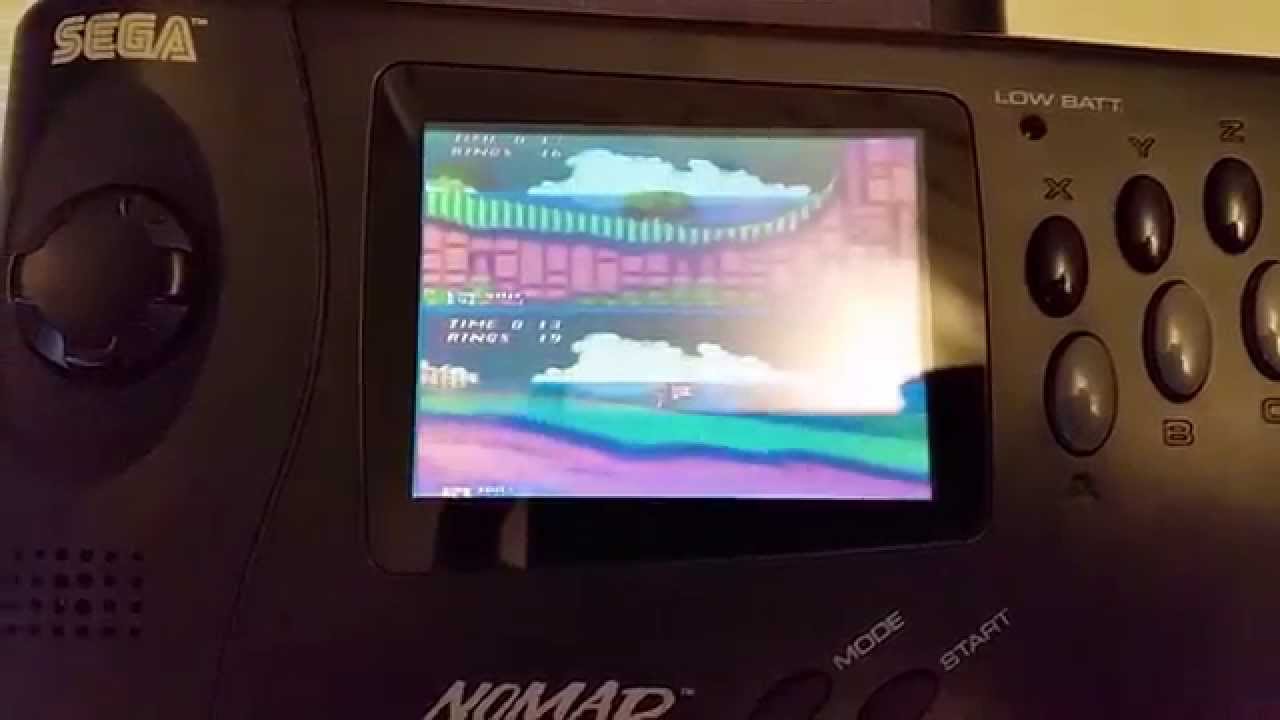Sega Nomad, a handheld Sega Genesis, came on the market in October 1995 at the cost of $180 dollars. While the concept behind it was purely simple, the feel that it generated enhanced the experience of gaming as a whole. The console became a huge hit as fast as it came because of how it simplified the method behind the huge library of Genesis games.
Although it was a fairly bulky piece of console that needed six pieces of battery to come to life, it still sold well. Although in the 90s the Sega Nomad needed a bit more to impress the users, now, because of the dynamics, it has become a classic.
The Nomad came with a back lit as well as frontlit color screen, AV cables and so many other things that made it easier to use. All these functionality turned the Nomad into a Genesis game.
Aspects That Makes Sega Nomad The Classic:
- A 16-bit Motorola 68000 running at 7.61 MHz CPU
- The co processors included Zilog Z80 that runs at 4 MHz, controls PSG and FM Chips
- 64 Kbytes RAM
- 1 Mbytes or 8-Mbit ROM
- 64 Kbytes of Video Ram
- The VDP
- 512 colors available
- Maximum 64 colors on screen
- 64 x 9-kbit
- The pixel resolution was 320 x 224, 40 x 28 text display mode
- Sound effects were perfection due to Texas Instruments PSG TI 76489 chip, and Yamaha YM 2612 FM chip
- The Signal or Noise Ratio was at 14dB
- 6 stereo sound channels
- Sound RAM was 8 Kbytes
- 1 cartridge port
- It also came with Extra controller port and AV port
Why Did Sega Nomad Win Hearts?
The Sega Nomad, or Sega Genesis was winning hearts outside of North America, and it had its hybrid model to thank for it. The performance marked a high that Super Nintendo didn’t record. Moreover, it delivered the players a plethora of innovative and quality games that were more than what the competitors were providing.
To top it all off, the marketing team went above and beyond to capture attention. Starting from Joe Montana, to Micheal Jackson, some big names swore by the best-selling titles. As a result, it introduced the world to Sonic, the hedgehog. The blazing speed drove many away from Nintendo and that is what people needed, a sense of newness in the generation of video game consoles.
Although some points were enough to set the Sega Genesis apart from the Nintendo. Take the fact that it was a home console and you could not take it anywhere with you. However, as time passed, technology evolved. Sega came up with versatility that took the Genesis game up a notch. In 1995, Sega in America launched the Nomad version that had high quality console games of Genesis in a smaller package. One could take it anywhere and play easily.
Let’s Focus On The Feel Of The Game More Intricately:
- Design
The design of the game console is pretty unique and desirable. It is what makes it different from other handheld consoles. The top is slanted which contrasts the flat bottom. The left side of the console is slightly curvy that contrasts the angular right side. Though a bit on the bulkier side, the feel it generates makes up for everything.
- Compatibility
The Sega Nomad has a majority of genesis games making it an ideal console for those who desire variety. There are almost all kinds of North American Genesis games available in the console.
- Input
Well, it comes with a directional pad, not one, but six face buttons, and a deal breaking “Mode” and “Start” button. The feel of the buttons makes it standard. It is also compatible for multiplayer.
- Display
The Nomad comes with a back lift LCD that puts it far ahead of its competitor consoles. Given it came in the time when monochrome screens ruled the world, it was well ahead of its time. Therefore, display quality was more than enough to exceed anything the previous console set. Although there were certain limitations.
- Power
It runs on six AA batteries that will allow you to play up to 3 hours. So, if you are traveling, always keep spare batteries.
Conclusion:
Starting from the screen that strikes a unique visual, from power and Tv connectivity, one can say that Sega Nomad was always one step ahead in the market.
Sega Nomad is an example of how technology can be versatile. The popular game console has set gaming history by bringing the best North American classic games in its bulky console.

